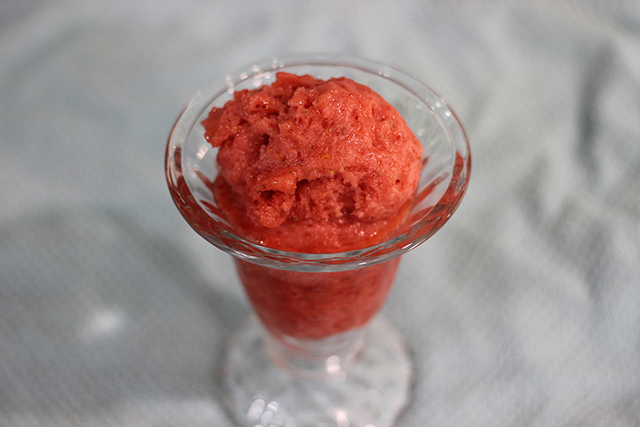Country Lifestyles
[AgriLife Today] Research shows Texas Grow! Eat! Go! interventions having positive impact on youth

By: Paul Schattenberg
COLLEGE STATION — Research has shown that efforts through the Texas Grow! Eat! Go! program have had a positive effect on improving the health and wellness of youth in the five participating Texas counties.
The study is a five-year collaboration among AgriLife Extension, the University of Texas School of Public Health at the Austin Regional Campus, Texas A&M University and the Texas A&M Health Science Center School of Public Health.
“The goal of the study was to determine the effect of specific interventions on improving the physical activity and eating behaviors of children and families, especially in low-income and underserved areas, and prevent obesity and overweight in children,” said Dr. Alex McIntosh of Texas A&M AgriLife Research, College Station.
The Texas Grow! Eat! Go! study engaged 28 resource-limited Title I elementary schools in five geographically diverse counties to determine the efficacy of two programs in conjunction with Coordinated Approach to Child Health, or CATCH, efforts, said Dr. Judy Warren, AgriLife Extension special initiatives coordinator and principal investigator for the study.
“CATCH is a coordinated school health program of the type mandated by the state,” Warren explained. “The programs being assessed in the study are two AgriLife Extension programs — Walk Across Texas, which promotes physical activity, and the Junior Master Gardener program, which promotes youth gardening and nutrition.”
She said these programs were selected for study as interventions because they had already been successful in engaging youth, but had never been evaluated on health outcomes using typical research methods and practices.
McIntosh, who is among a team of cross-university researchers involved with the Texas Grow! Eat! Go! study, said the study was designed to help assess the separate and joint effects of the two experiential programs on weight status, diet and physical activity among third-grade students.
“Schools in the research study were randomly assigned to four treatment groups, using schools implementing the CATCH program,” McIntosh said. “The four groups were CATCH-only, CATCH and Walk Across Texas, CATCH and Junior Master Gardeners, and CATCH in combination with both programs.”
The study was conducted in schools with a high degree of ethnic diversity. Youth enrollment in the study was 54 percent Hispanic and 18 percent African-American. Forty-three percent of their parents indicated some degree of family food insecurity.
“We collected data from 28 elementary schools in the diverse geographic areas of Texas — north central, coastal south, central and east central areas — with from three to eight classrooms in each participating school,” McIntosh said. “There were 759 third-graders in the group that participated in the first year of the study and 567 who participated in the second year.”
Data were collected from student, parent and teacher questionnaires, interviews with principals and program coordinators and from public sources. Student body mass index, or BMI, was also measured for students. Research methodology called for the data to be collected at four points in time: pre-test or baseline, immediate post-test, four-month post-test and one-year post-test.
The seven key outcome variables to be assessed for the students in the study were knowledge of nutrition and gardening, vegetable preference, usual vegetable consumption, vegetable consumption at school, sugar-sweetened beverage consumption, physical activity behaviors and sedentary behaviors.
The four key outcome variables to be assessed for parents in the study were home availability of vegetables, home availability of sugar-sweetened beverages, parental support of physical activity and parental support for decreasing sedentary behavior.
The four key child-parent interaction outcome variables for the study were gardening together, preparing food together, being physically active together and eating meals together.
“To determine within-group effects, pre-post differences for each condition were examined,” McIntosh said. “For each outcome, pre-post differences in each treatment condition were compared against the pre-post differences observed in the comparison group.”
Preliminary results from the overall study showed single and combined interventions were effective in changing variables related to weight status in children, significantly improving twelve of the fifteen behaviors targeted, while maintaining child weight status.
“We also were able to determine through our data analysis that positive behavioral and knowledge changes were largely due to the in-person participation of the students in these interventions, such as the physical activity of Walk Across Texas and working and tending the school gardens that were established as part of Junior Master Gardener activities,” McIntosh said.
-30-
Find more stories, photos, videos and audio at http://today.agrilife.org
Country Lifestyles
Lacey’s Pantry: Strawberry Sorbet

By Lacey Vilhauer
Ingredients:
1 whole lemon, seeded and roughly chopped
2 cups sugar
2 pounds strawberries, hulled
Juice of 1 to 2 lemons
¼ cup water
Directions:
Place the chopped lemon and sugar in a food processor and pulse until combined. Transfer to a large bowl. Puree the strawberries in a food processor and add to the lemon mixture along with juice of one lemon and water. Taste and add more juice as desired.
To read more, pick up a copy of the April issue of NTFR magazine. To subscribe by mail, call 940-872-5922.
Country Lifestyles
A Mountain Out of a Molehill

By Nicholas Waters
As winter plods along – come Spring and gopher mounds – homeowners and farmers find themselves playing a familiar song – fiddling while Rome is burning.
Let’s make a mountain out of a molehill. Those mounds on your lawn and pasture could be moles, but they’re more than likely gophers; Plains Pocket Gophers to be pragmatic – Geomys bursarius to be scientific.
These rodents dig and chew, and the damage they can do goes beyond the mounds we mow over. Iowa State University cited a study in Nebraska showing a 35 percent loss in irrigated alfalfa fields due to the presence of pocket gophers; the number jumped to 46 percent in decreased production of non-irrigated alfalfa fields.
The internet is replete with academic research from coast-to-coast on how to curtail gopher populations, or at least control them. Kansas State University – then called Kansas State Agricultural College – also published a book [Bulletin 152] in February 1908 focused exclusively on the pocket gopher.
To read more, pick up a copy of the April issue of NTFR magazine. To subscribe by mail, call 940-872-5922.
Country Lifestyles
When A City Girl Goes Country

By Annette Bridges
Everyone needs a room with a view that makes their heart happy. My honest favorite panorama would be either the mountains or the ocean. I have yet to convince my hubby to make permanent moves to either, although he does enjoy the visits as much as I do.
The location of our house on our ranch does not provide the expansive field of vision of our land that I would enjoy. So, I have created a room decorated and furnished in a way that gives me smiles, giggles, and a wonderful peace-filled feeling when I am hanging out in it. I am in that place right now writing this column. I am in a lounging position with my computer in my lap on the chaise that was once my sweet mama’s. I had it reupholstered this year to give it a fresh look.
To read more, pick up a copy of the April issue of NTFR magazine. To subscribe by mail, call 940-872-5922.
-

 Country Lifestyles1 year ago
Country Lifestyles1 year agoScott & Stacey Schumacher: A Growth Mindset
-

 Equine7 months ago
Equine7 months agoThe Will to Win
-

 Country Lifestyles7 years ago
Country Lifestyles7 years agoStyle Your Profile – What your style cowboy hat says about you and new trends in 2017
-

 Country Lifestyles4 years ago
Country Lifestyles4 years agoAmber Crawford, Breakaway Roper
-

 HOME7 years ago
HOME7 years agoGrazing North Texas – Wilman Lovegrass
-

 Country Lifestyles7 years ago
Country Lifestyles7 years agoDecember 2016 Profile, Rusty Riddle – The Riddle Way
-

 Country Lifestyles8 years ago
Country Lifestyles8 years agoJune 2016 Profile – The man behind the mic: Bob Tallman
-

 Outdoor9 years ago
Outdoor9 years agoButtercup or Primrose?








